Experimental and Computational Study of Optimized Gas Diffusion Layer for Polymer Electrolyte Membrane Electrolyzer
Abstract
:1. Introduction
1.1. GDL
1.2. GeoDict
2. Experiment and Modeling
2.1. Material and Fabrication
2.2. Modeling
Establishment of Grain Models
2.3. Simulation and Prediction
2.3.1. ElastoDict
2.3.2. FlowDict
2.3.3. ConductoDict
2.3.4. PoroDict
3. Result and Discussion
3.1. Model Verification and Analysis
3.2. Prediction of Various Properties via GeoDict
3.3. Optimization of Sintering Temperature w.r.t Various Properties
4. Conclusions and Future Recommendation
Author Contributions
Funding
Institutional Review Board Statement
Informed Consent Statement
Data Availability Statement
Acknowledgments
Conflicts of Interest
Abbreviations
| PEMFC | Proton exchange membrane fuel cell |
| GDL | Gas diffusion layer |
| 2D | Two dimensional |
| 3D | Three dimensional |
| SEM | Scanning electron microscope |
| XRD | X-ray diffraction |
| BCC | Body center cubic |
| HCP | Hexagonal crystalline phase |
| Ti64 | Titanium-6Aluminum-4Vanadium |
References
- Garche, J.; Jürissen, L. Application of Fuel Cell Technology: Status and Perspectives. Electrochem. Soc. 2015, 24, 39. [Google Scholar] [CrossRef]
- Wang, Y.; Chen, K.S.; Mishler, J.; Cho, S.C.; Adroher, X.C. A review of polymer electrolyte membrane fuel cells: Technology, applications, and needs on fundamental research. Appl. Energy 2011, 88, 981–1007. [Google Scholar] [CrossRef] [Green Version]
- Vaghari, H.; Jafarizadeh-Malmiri, H.; Berenjian, A.; Anarjan, N. Recent advances in application of chitosan in fuel cells. Sustain. Chem. Process. 2013, 1, 16. [Google Scholar] [CrossRef] [Green Version]
- Yang, Z.; Lin, J.; Zhang, H.; Lin, B.; Lin, G. A new direct coupling method for photovoltaic module-PEM electrolyzer stack for hydrogen production. Fuel Cells 2018, 18, 543–550. [Google Scholar] [CrossRef]
- Ozden, A.; Shahgaldi, S.; Li, X.; Hamdullahpur, F. A review of gas diffusion layers for proton exchange membrane fuel cells—With a focus on characteristics, characterization techniques, materials and designs. Prog. Energy Combust. Sci. 2019, 74, 50–102. [Google Scholar] [CrossRef]
- Maamouri, R.; Guilbert, D.; Zasadzinski, M.; Rafaralahy, H. Proton exchange membrane water electrolysis: Modeling for hydrogen flow rate control. Int. J. Hydrog. Energy 2021, 46, 7676–7700. [Google Scholar] [CrossRef]
- IRENA. Green Hydrogen Cost Reduction: Scaling Up Electrolysers to Meet the 1.5 °C Climate Goal; International Renewable Energy Agency: Abu Dhabi, United Arab Emirates, 2020; 105p. [Google Scholar]
- Selamet, F.; Becerikli, F.; Mat, M.D.; Kaplan, Y. Development and testing of a highly efficient proton exchange membrane (PEM) electrolyzer stack. Int. J. Hydrog. Energy 2011, 36, 11480–11487. [Google Scholar] [CrossRef]
- Grigoriev, S.; Porembsky, V.; Fateev, V. Pure hydrogen production by PEM electrolysis for hydrogen energy. Int. J. Hydrog. Energy 2006, 31, 171–175. [Google Scholar] [CrossRef]
- Marshall, A.; Børresen, B.; Hagen, G.; Tsypkin, M.; Tunold, R. Hydrogen production by advanced proton exchange membrane (PEM) water electrolysers—Reduced energy consumption by improved electrocatalysis. Energy 2007, 32, 431–436. [Google Scholar] [CrossRef]
- Falcão, D.; Pinto, A. A review on PEM electrolyzer modelling: Guidelines for beginners. J. Clean. Prod. 2020, 261, 121184. [Google Scholar] [CrossRef]
- Forner-Cuenca, A.; Biesdorf, J.; Gubler, L.; Kristiansen, P.M.; Schmidt, T.J.; Boillat, P. Engineered water highways in fuel cells: Radiation grafting of gas diffusion layers. Adv. Mater. 2015, 27, 6317–6322. [Google Scholar] [CrossRef] [PubMed]
- Kang, Z.; Mo, J.; Yang, G.; Retterer, S.T.; Cullen, D.A.; Toops, T.J.; Green, J.B., Jr.; Mench, M.M.; Zhang, F.-Y. Investigation of thin/well-tunable liquid/gas diffusion layers exhibiting superior multifunctional performance in low-temperature electrolytic water splitting. Energy Environ. Sci. 2017, 10, 166–175. [Google Scholar] [CrossRef]
- Hernandez-Aldave, S.; Andreoli, E. Fundamentals of gas diffusion electrodes and electrolysers for carbon dioxide utilisation: Challenges and opportunities. Catalysts 2020, 10, 713. [Google Scholar] [CrossRef]
- Mo, J.; Steen, S.M.; Retterer, S.; Cullen, D.A.; Terekhov, A.; Zhang, F.-Y. Mask-patterned wet etching of thin titanium liquid/gas diffusion layers for a PEMEC. ECS Trans. 2015, 66, 3. [Google Scholar] [CrossRef]
- Aşık, E.E.; Bor, Ş. Fatigue behavior of Ti–6Al–4V foams processed by magnesium space holder technique. Mater. Sci. Eng. A 2015, 621, 157–165. [Google Scholar] [CrossRef]
- Wei, J.; Ning, F.; Bai, C.; Zhang, T.; Lu, G.; Wang, H.; Li, Y.; Shen, Y.; Fu, X.; Li, Q.; et al. An ultra-thin, flexible, low-cost and scalable gas diffusion layer composed of carbon nanotubes for high-performance fuel cells. J. Mater. Chem. A 2020, 8, 5986–5994. [Google Scholar] [CrossRef]
- Gervais, P.-C.; Bourrous, S.; Dany, F.; Bouilloux, L.; Ricciardi, L. Simulations of filter media performances from microtomography-based computational domain. Experimental and analytical comparison. Comput. Fluids 2015, 116, 118–128. [Google Scholar] [CrossRef]
- Jaganathan, S.; Tafreshi, H.V.; Pourdeyhimi, B. A case study of realistic two-scale modeling of water permeability in fibrous media. Sep. Sci. Technol. 2008, 43, 1901–1916. [Google Scholar] [CrossRef]
- Hoch, D.; Azimian, M.; Baumann, A.; Behringer, J.; Niessner, J. Comparison of Voxel-Based and Mesh-Based CFD Models for Aerosol Deposition on Complex Fibrous Filters (vol 43, pg 2538, 2020). Chem. Eng. Technol. 2021, 43, 1153. [Google Scholar] [CrossRef]
- Zarandi, M.A.F.; Arroyo, S.; Pillai, K.M. Longitudinal and transverse flows in fiber tows: Evaluation of theoretical permeability models through numerical predictions and experimental measurements. Compos. Part A Appl. Sci. Manuf. 2019, 119, 73–87. [Google Scholar] [CrossRef]
- Bai, H.; Qian, X.; Fan, J.; Shi, Y.; Duo, Y.; Guo, C. Probing the effective diffusion coefficient and filtration performance of micro/nanofibrous composite layered filters. Ind. Eng. Chem. Res. 2021, 60, 7301–7310. [Google Scholar] [CrossRef]
- Math 2 Market. 2023. Available online: https://www.math2market.de/ (accessed on 1 July 2022).
- Welsch, G.; Boyer, R.; Collings, E. Materials Properties Handbook: Titanium Alloys; ASM International: Almere, Netherlands, 1993. [Google Scholar]
- ASM International. Metals Handbook Vol. 2: Properties and Selection: Nonferrous Alloys and Special-Purpose Materials; ASM: Almere, Netherlands, 1990. [Google Scholar]
- Structural alloys handbook; John, M.; Technical, Y.H. (Eds.) CINDAS/Purdue University: West Lafayette, IN, USA, 1996. [Google Scholar]
- Ebadi, M.; Armstrong, R.T.; Mostaghimi, P.; Da Wang, Y.; Alqahtani, N.; Amirian, T.; James, L.A.; Parmar, A.; Zahra, D.; Hamze, H.; et al. Predictive Soft Computing Methods for Building Digital Rock Models Verified by Positron Emission Tomography Experiments. Water Resour. Res. 2022, 58, e2021WR031814. [Google Scholar] [CrossRef]
- FlowDict User Guide GeoDict. 2022. Available online: https://www.geodict.com/geodict-software/geodict-base-modules/simulation/flowdict.html (accessed on 11 July 2022).
- Krotkiewski, M.; Ligaarden, I.S.; Lie, K.-A.; Schmid, D.W. On the importance of the stokes-brinkman equations for computing effective permeability in karst reservoirs. Commun. Comput. Phys. 2011, 10, 1315–1332. [Google Scholar] [CrossRef]
- Conductodict User Guide Geodict. Available online: https://www.geodict.com/geodict-software/geodict-base-modules/simulation/conductodict.html (accessed on 27 August 2021).
- Csoklich, C.; Sabharwal, M.; Schmidt, T.J.; Büchi, F.N. Does the thermal conductivity of gas diffusion layer matter in polymer electrolyte fuel cells? J. Power Sources 2022, 540, 231539. [Google Scholar] [CrossRef]
- Bolzoni, L.; ERuiz-Navas, M.; Gordo, E. Flexural properties, thermal conductivity and electrical resistivity of prealloyed and master alloy addition powder metallurgy Ti–6Al–4V. Mater. Des. (1980–2015) 2013, 52, 888–895. [Google Scholar] [CrossRef] [Green Version]
- Porodict Guide to User GeoDict. 2022. Available online: https://www.geodict.com/geodict-software/geodict-base-modules/analysis/porodict.html (accessed on 21 July 2022).
- Panin, A.; Kazachenok, M.; Kolmakov, A.; Chizhik, S.; Heifetz, M.; Chugui, Y. Microstructure and mechanical behaviour of additive manufactured Ti–6Al–4V parts under tension. EPJ Web Conf. 2019, 221, 01037. [Google Scholar] [CrossRef]
- Wysocki, B.; Maj, P.; Sitek, R.; Buhagiar, J.; Kurzydłowski, K.J.; Święszkowski, W. Laser and electron beam additive manufacturing methods of fabricating titanium bone implants. Appl. Sci. 2017, 7, 657. [Google Scholar] [CrossRef] [Green Version]
- Steen, S.M.; Mo, J.; Kang, Z.; Yang, G.; Zhang, F.-Y. Investigation of titanium liquid/gas diffusion layers in proton exchange membrane electrolyzer cells. Int. J. Green Energy 2017, 14, 162–170. [Google Scholar] [CrossRef]
- Feser, J.P.; Prasad, A.K.; Advani, S.G. Experimental characterization of in-plane permeability of gas diffusion layer. J. Power Sources 2006, 162, 1226–1231. [Google Scholar] [CrossRef]
- Tan, Z.; Jia, L.; Zhang, Z. Water vapor transport with condensation in gas diffusion Layer of a Proton Exchange Membrane Fuel Cell. Heat Transf. Res. 2012, 43, 139–150. [Google Scholar] [CrossRef]
- Xia, L.; Ni, M.; He, Q.; Xu, Q.; Cheng, C. Optimization of gas diffusion layer in high temperature with the focus on thickness and porosity. Appl. Energy 2021, 300, 117357. [Google Scholar] [CrossRef]
- Grigoriev, S.A.; Millet, P.; Volobuev, S.A.; Fateev, V.N. Optimization of porous current collector for PEM water electrolyzers. Int. J. Hydrog. Energy 2009, 34, 4968–4973. [Google Scholar] [CrossRef]
- Gostick, J.T.; Fowler, M.W.; Pritzker, M.D.; Ioannidis, M.A.; Behra, L.M. In-plane and through-plane gas permeability of carbon fiber electrode backing layers. J. Power Source 2006, 162, 228–238. [Google Scholar] [CrossRef]
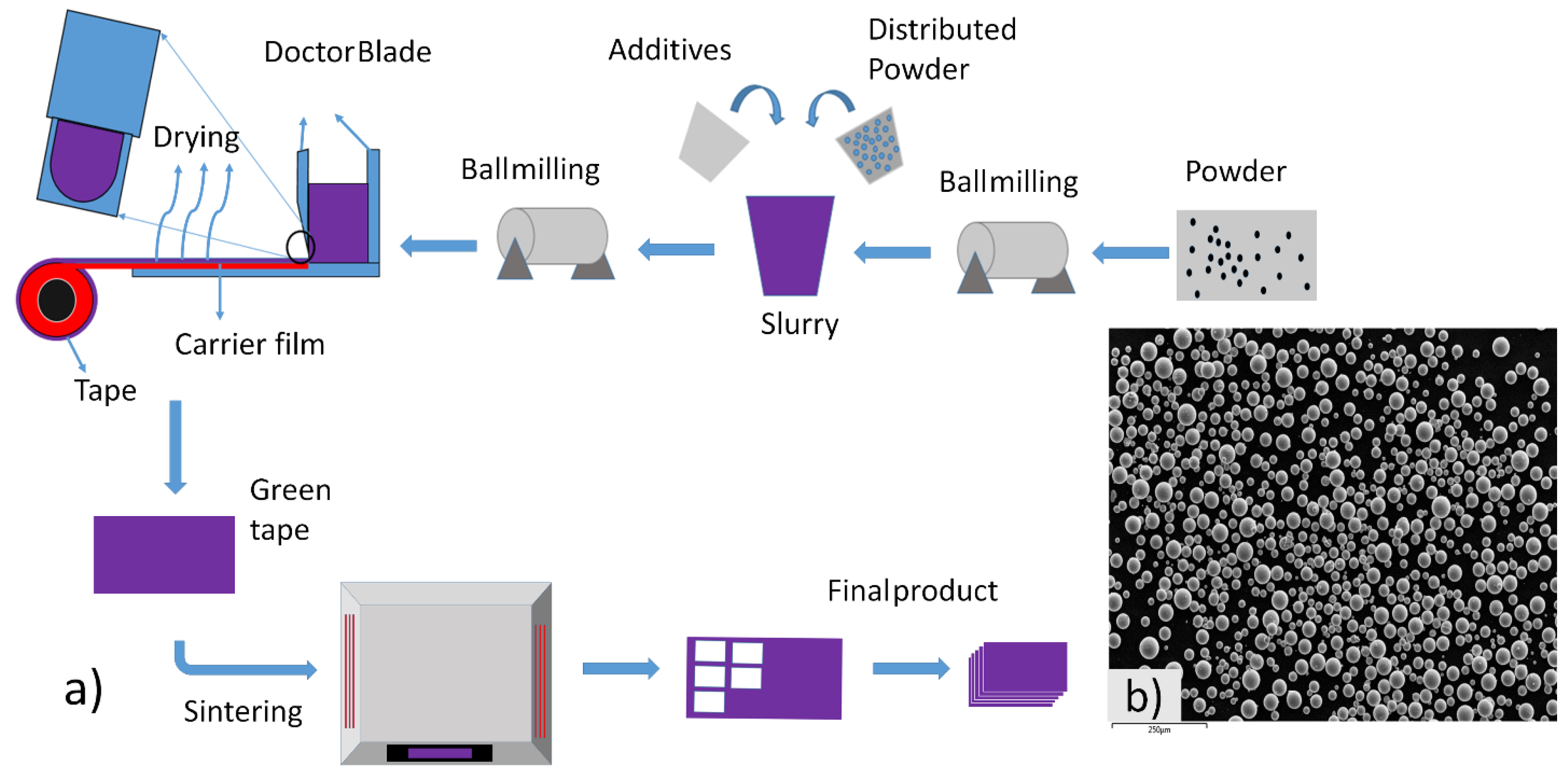

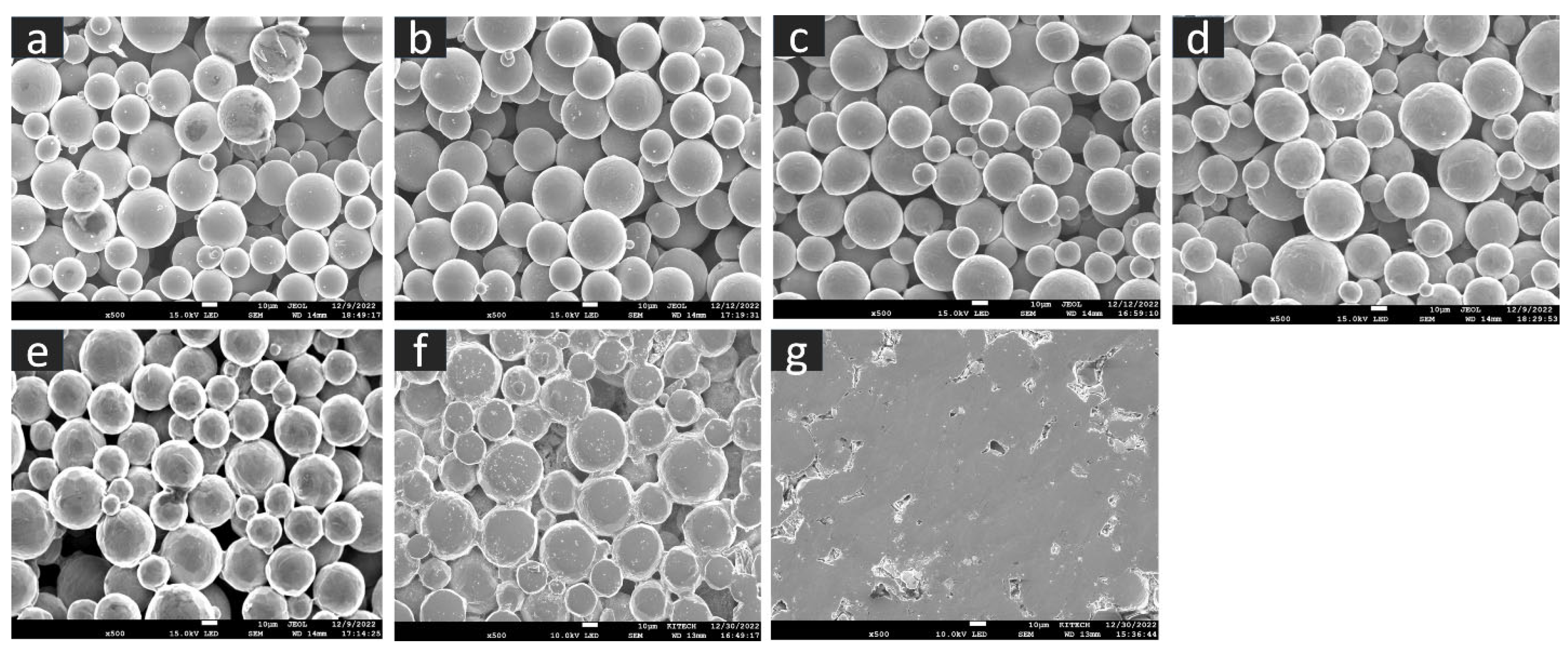
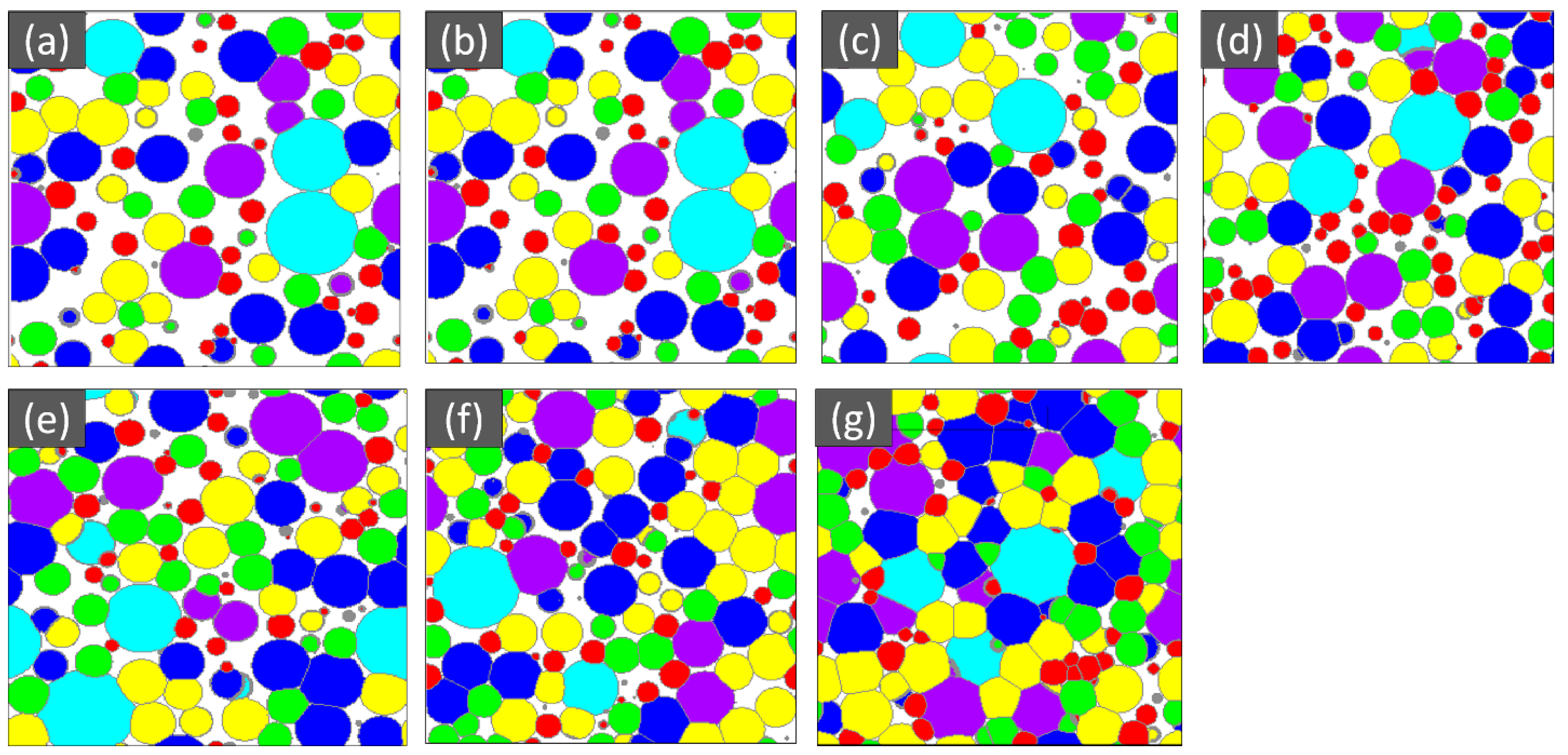

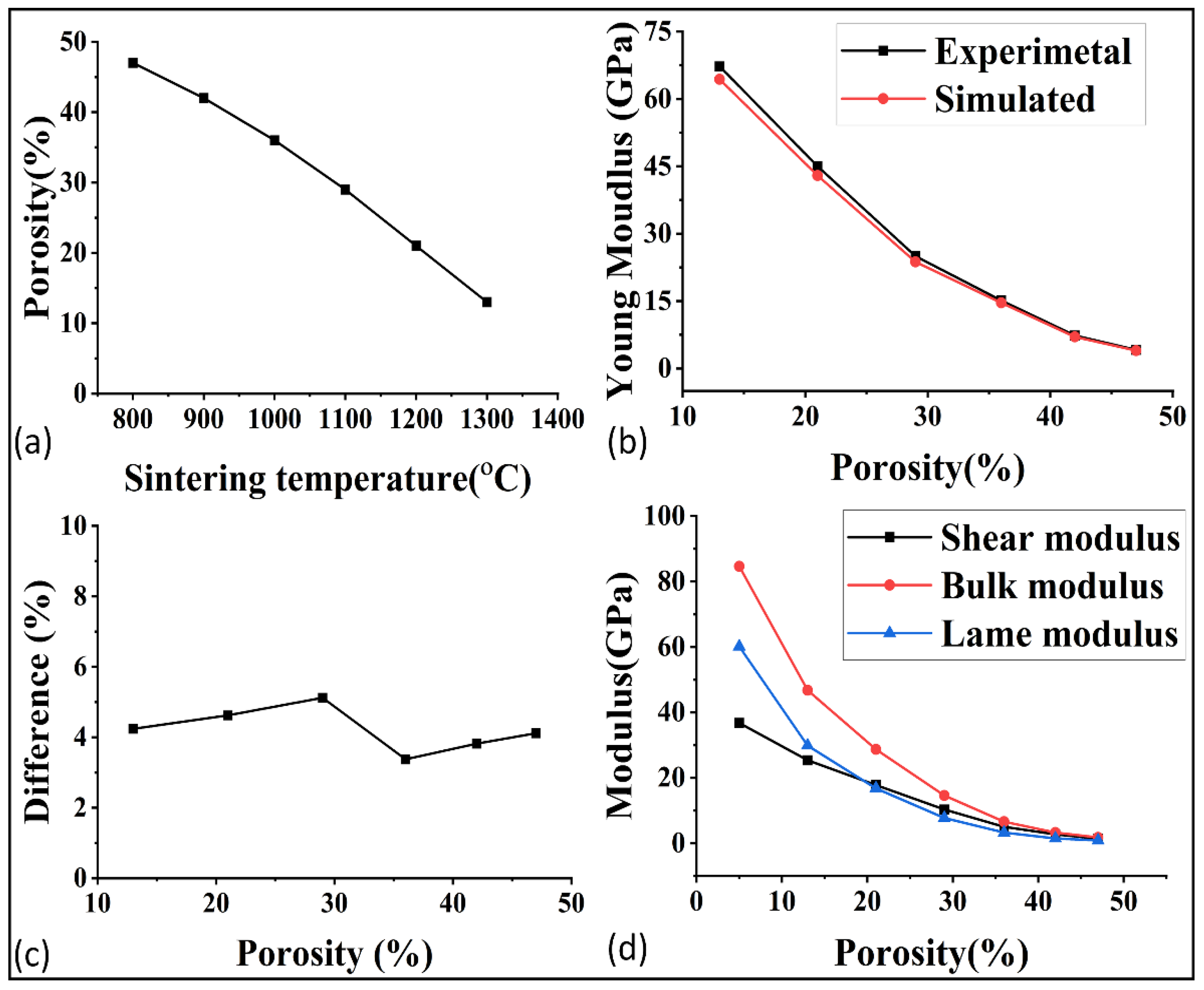
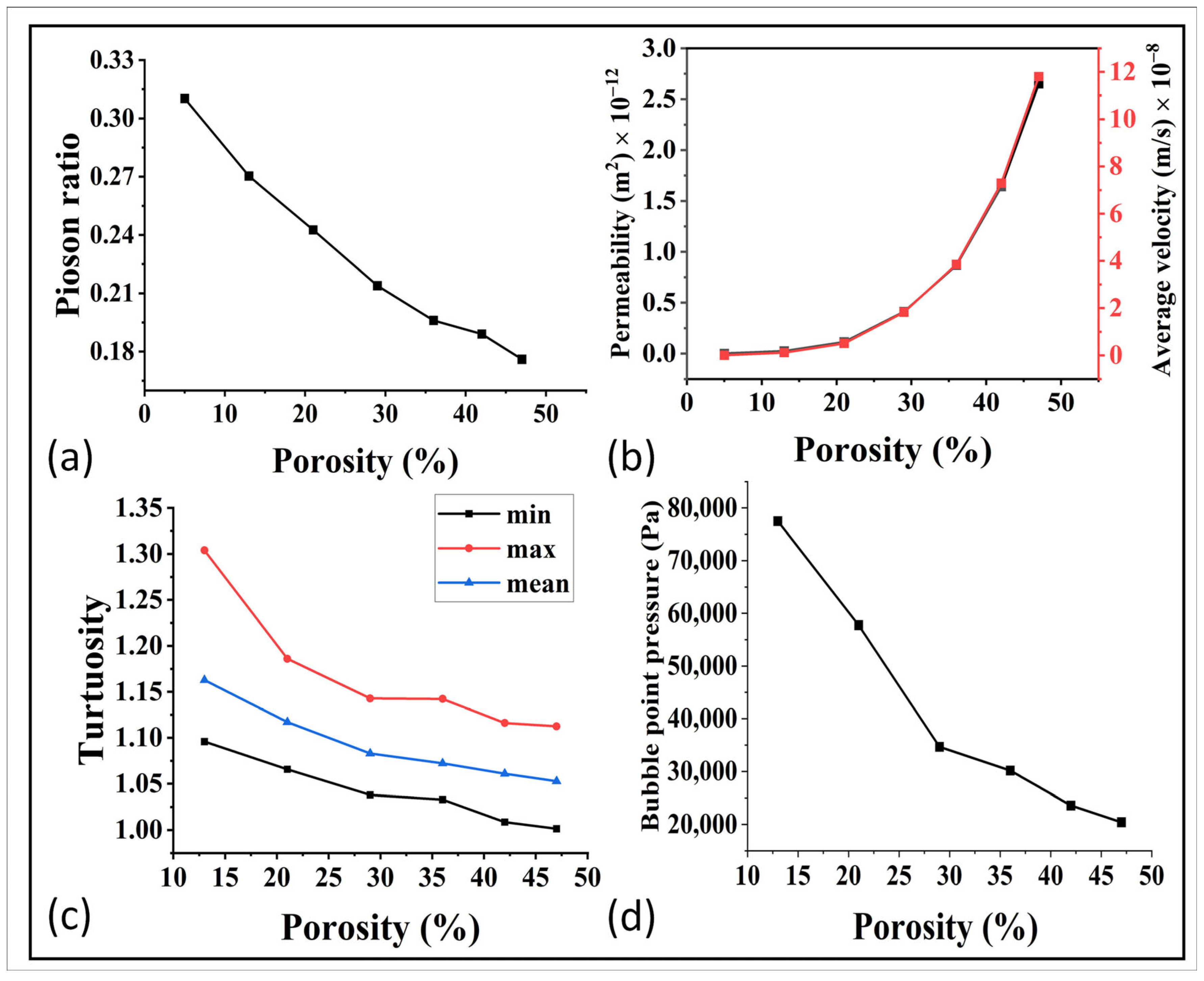
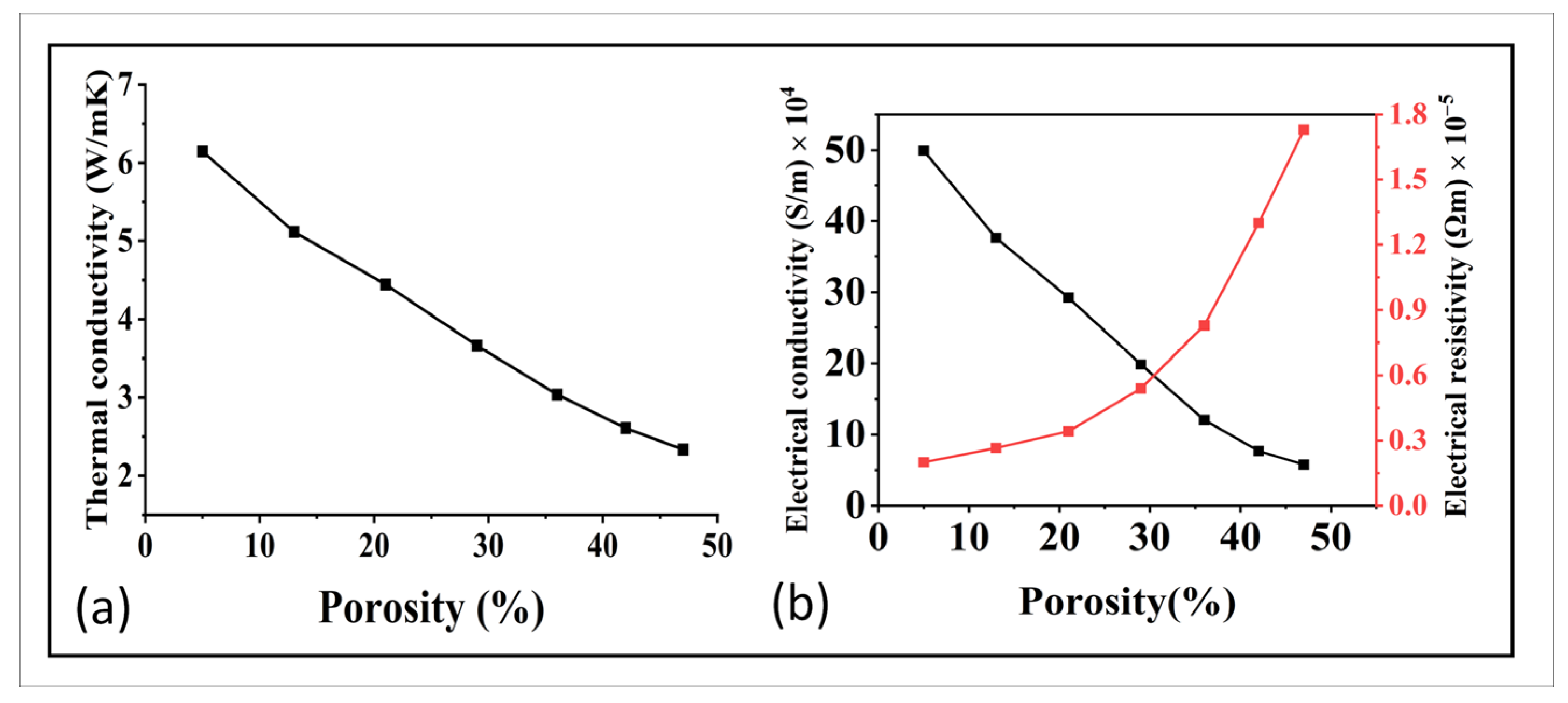

| Additive | Material | (Wt. %) |
|---|---|---|
| Water | Demi water | 31.8 |
| Dispersant | Ammonium Polymethacrylate | 2 |
| Binder | Polyvinyl alcohol | 6.46 |
| Plasticizer | Polymethacrylate | 6.46 |
| Surfactant | Tergitol TMN 6 | 2 |
Disclaimer/Publisher’s Note: The statements, opinions and data contained in all publications are solely those of the individual author(s) and contributor(s) and not of MDPI and/or the editor(s). MDPI and/or the editor(s) disclaim responsibility for any injury to people or property resulting from any ideas, methods, instructions or products referred to in the content. |
© 2023 by the authors. Licensee MDPI, Basel, Switzerland. This article is an open access article distributed under the terms and conditions of the Creative Commons Attribution (CC BY) license (https://creativecommons.org/licenses/by/4.0/).
Share and Cite
Hussain, J.; Kim, D.-K.; Park, S.; Khalid, M.W.; Hussain, S.-S.; Ali, A.; Lee, B.; Song, M.; Kim, T.-S. Experimental and Computational Study of Optimized Gas Diffusion Layer for Polymer Electrolyte Membrane Electrolyzer. Materials 2023, 16, 4554. https://doi.org/10.3390/ma16134554
Hussain J, Kim D-K, Park S, Khalid MW, Hussain S-S, Ali A, Lee B, Song M, Kim T-S. Experimental and Computational Study of Optimized Gas Diffusion Layer for Polymer Electrolyte Membrane Electrolyzer. Materials. 2023; 16(13):4554. https://doi.org/10.3390/ma16134554
Chicago/Turabian StyleHussain, Javid, Dae-Kyeom Kim, Sangmin Park, Muhammad Waqas Khalid, Sayed-Sajid Hussain, Ammad Ali, Bin Lee, Myungsuk Song, and Taek-Soo Kim. 2023. "Experimental and Computational Study of Optimized Gas Diffusion Layer for Polymer Electrolyte Membrane Electrolyzer" Materials 16, no. 13: 4554. https://doi.org/10.3390/ma16134554







